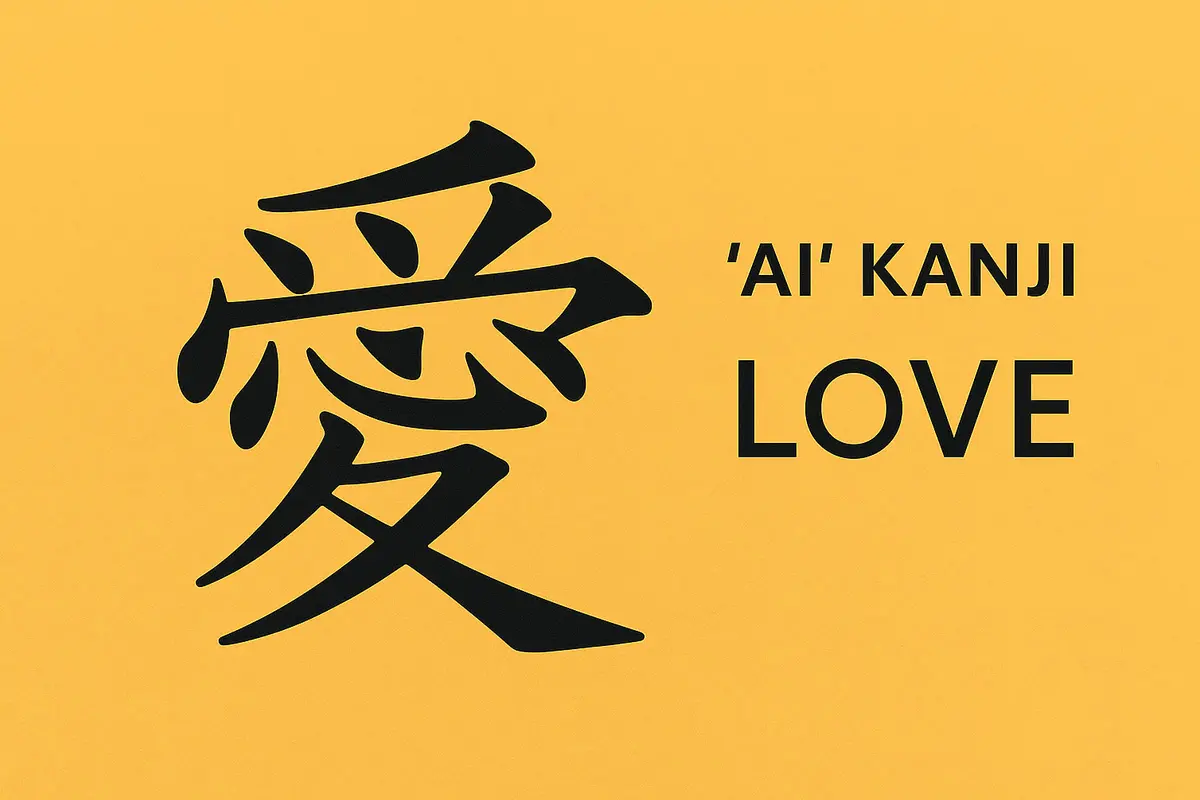
What Does “Ai” Mean in Japanese?
In Japanese, “ai” (愛) means love — a concept that encompasses not just romantic love, but also affection for family, friends, community, and even ideals. The kanji 愛 conveys emotional depth and sincerity, making it one of the most recognized symbols in Japanese culture.
You’ll see it in literature, calligraphy, everyday expressions, art, and even official mottos.
The Kanji for Ai: 愛
- Meaning: Love, affection
- Onyomi (Chinese reading): あい (ai)
- Kunyomi (Japanese reading): Rare; typically used in compound words rather than standalone native readings
- Radical: 心 (heart) — located in the lower center of the character
- Stroke Count: 13
- JLPT Level: N3 (intermediate level in the Japanese Language Proficiency Test)
Stroke Order for 愛
Learning stroke order isn’t just a matter of neatness — in Japanese calligraphy and handwriting, the correct order ensures balance and legibility.
How to write 愛 step-by-step:
- Top “roof” strokes — forms the upper protective element.
- Central heart radical (心) — placed beneath the top, symbolizing love’s emotional core.
- Lower component — represents movement or action, suggesting love in motion.
💡 Tip: Practice with our interactive stroke order tool to visualize and repeat each stroke until it becomes second nature.
Cultural Significance of 愛
The kanji 愛 is more than a dictionary entry — it’s a cultural symbol that appears in:
- Proverbs: 愛は地球を救う (Love will save the Earth)
- Names: 愛子 (Aiko, “child of love”) and 愛美 (Manami, “beautiful love”)
- Arts: From woodblock prints to modern manga titles, 愛 often features as a thematic centerpiece.
- Events: Charity campaigns, school mottos, and public slogans frequently incorporate 愛 to inspire unity and kindness.
Common Phrases with 愛
| Japanese | Romaji | English Meaning |
|---|---|---|
| 愛してる | aishiteru | I love you |
| 愛の歌 | ai no uta | Love song |
| 愛国心 | aikokushin | Patriotism |
| 愛情 | aijou | Affection |
| 無償の愛 | mushou no ai | Unconditional love |
Ai in Calligraphy and Art
In shodō (Japanese calligraphy), 愛 is a popular choice for practice and display. Its symmetrical structure allows for artistic expression while maintaining harmony between elements.
Professional calligraphers may vary:
- Brush thickness to emphasize warmth or strength.
- Stroke speed to evoke passion or calm.
- Ink density for depth and texture.
It’s also common to see 愛 stylized in tattoos, greeting cards, scrolls, and digital art.
How to Practice Writing 愛
- Use Genkō Yōshi (原稿用紙): Squared manuscript paper helps with stroke spacing.
- Trace First: Begin by tracing over printed diagrams.
- Repeat in Sets: Write 愛 in sets of 5–10 to build muscle memory.
- Combine with Words: Practice 愛 in phrases like 愛してる or 愛情 for real-world usage.
- Check Proportion: Ensure the heart radical sits centered and balanced.
Final Thoughts
When people search for “AI Kanji”, they’re almost always referring to 愛, the beautiful and profound kanji for love.
By learning its meaning, mastering its stroke order, and exploring its cultural depth, you’re not just memorizing a character — you’re connecting with an important part of the Japanese language and cultural heritage.
For hands-on learning, visit our Hiragana & Kanji practice tool to interactively trace and memorize the character.